A personal trainer creates and provides safe, effective exercise programs for apparently healthy individuals or persons medically cleared to exercise. They collaborate with clients to set goals, enforce safety rules, provide feedback, and oversee achievement of fitness goals
The scope of practice for a personal trainer has a primary focus on prevention and involves enhancing components of health and fitness.
Personal trainers emphasize correct exercise techniques, minimizing the risk of injury to clients. A proper exercise plan can result in improved body composition, physical performance, heart condition, and health outcomes.
Personal trainers also educate clients in aspects of wellness, including general health and nutrition.
At La Hacienda, a personal trainer is available during therapeutic activities.
What is a Certified Personal Trainer?

Certified personal fitness trainers have proven to an accreditation agency that they have achieved a level of competency in helping people achieve health and fitness goals. They may be certified online or in-person.
Several personal trainer certifications are available in the U.S. Most require a high school diploma, proven capability in cardiopulmonary resuscitation (CPR) and use of an automated external defibrillator (AED), and successful completion of a personal trainer examination.
In this country, the United States Registry of Exercise Professionals (USREPS) is the official registry of exercise professionals. It provides a single source for verifying credentials and locating qualified exercise professionals.
Other recognized personal trainer certification organizations include the Aerobics and Fitness Association of America (AFAA). the American Council on Exercise (ACW), and the International Sports Sciences Association (ISSA).
Another source of certification information is the National Commission for Certifying Agencies. NCCA accredited personal trainers and training centers can be found through a search function on the NCCA website.
What are Pre-Personal Training Assessments?
Personal trainers assess a number of factors before beginning an exercise program with a client. This enables them to measure client’s goals as they progress toward improved physical fitness.
They start with a pre-participation health screening. Other assessments include posture and movement, cardio-respiratory fitness, flexibility, balance, core function, muscular fitness, and body composition.
Skill-related parameters such as power, speed, agility, and coordination are also checked.
Personal Trainers and Other Health Conditions

Clients who work with personal trainers often have had injuries or health issues. Trainers should know when a client needs medical help beyond physical training or prior to starting training.
If a trainer feels that a client has a medical condition, such as a severe substance use disorder, that could prevent the client from safe participation in an exercise program, they should refer the client to the proper health professional for medical clearance.
Personal Training for Older Adults
With the deluge of Baby Boomers entering their 60s and 70s, the fitness industry has seen an opportunity in specialized fitness programs for older persons who seek more functional mobility and better health.
This specialized form of physical activity addresses changes that happen as bodies age, sometimes lessening the quality of life and independence. The trainer pushes the client to reach their goals but keeps in mind that older bodies work differently from their younger counterparts.
Depending on the trainer’s experience and education, they may also address behavior change that occurs with aging.
Is There Online Personal Training?
Not everyone has easy access to an in-person trainer and some people need to work training sessions into an unusual schedule or just don’t want to go to health clubs. For them, an online personal trainer is the answer.
Fitness training via the Internet is generally less expensive than an in-person trainer. This depends on how much time an online personal trainer works with a client individually and how much time is spent following general demonstration instruction.
For clients it may be an advantage to learn online at their desired pace.
Online coaching requires the trainer to adapt programs somewhat–they can’t physically position the client–but with the right trainer, clients reach their goals.
History of Personal Trainers
Personal training programs date back at least to the 7th century BC in ancient Greece with athletes training for the forerunner of our modern Olympics.
German and Swedish professional trainers made major advancements in exercise equipment and programs in the 1700s and 1800s.
Media played a role in the popularity of personal trainer Jack LaLanne in the mid-1900s on American television. His show encouraged men and women to become involved in physical training sessions to exercise for weight loss and achieve personal fitness.
Exercise and Nutrition as Disease Prevention
Dr. Kenneth Cooper, who introduced the word aerobics in 1968, took personal fitness training another step promoting exercise and fitness as tools for disease prevention. He showed that regular exercise and proper eating can prevent some diseases.
The Centers for Disease Control and Prevention says a healthy diet combined with enough physical activity can help adults live longer and have a lower risk of heart disease, type 2 diabetes, obesity, and some cancers.
Who Does Personal Training Certification?

The National Strength and Conditioning Association (NSCA) first recognized a nationally accredited personal training certificate in 1996.
Personal training certifications now accredited by the National Commission for Certifying Agencies include:
- The Cooper Institute
- Training and Wellness Certification Commission
- The Academy of Applied Personal Training Education
- American Council on Exercise
- National Academy of Sports Medicine
- National Council on Strength and Fitness
- National Exercise Trainers Association
- National Federation of Professional Trainers
- International Fitness Professionals Association
- National Council for Certified Personal Trainers
- American College of Sports Medicine
- National Exercise and Sports Trainers Association
Completion of a certification exam by one of these will earn the fitness instructor the designation of certified personal trainer.
What Education is Necessary for Personal Trainers?
A bachelor’s degree in exercise science or physical education is not usually required to become a personal trainer, but some college-level classes, such as kinesiology can be helpful.
A high school diploma may or may not be required depending on age and experience.
An in-person or online course in first aid is also useful to personal fitness trainers.
Among things a personal trainer needs to learn is how to create a training plan based on a client’s needs. Being able to interact with people is extremely important as they train clients to live healthier lifestyles.
The Job Market for Personal Trainers

So, what is the real-world application regarding employment for a certified personal trainer?
According to the U.S. Bureau of Labor Statistics (BLS), the top industries employing personal trainers are amusement and recreation industries, which employ 13.48 percent of the trainers and pay an annual mean salary of $46,760.
Civic and social organizations employ almost 7 percent of the instructors. With them a good personal trainer will earn about $39,000, according to the BLS.
The best opportunities for job openings are in California, Texas, Florida, and New York in that order, according to labor statistics.
If highest income guides an exercise trainers’ career path, they may want to work in New York or the District of Columbia. The annual mean wage in both is above $61,000.
What are Group Fitness Instructors?
Some personal trainers change careers slightly to become group fitness instructors, trainers who work with multiple clients at the same time, in-person or online.
Usually this involves leading exercise activities in a fitness center or other facility on an established schedule. Benefits of the job may include free or highly discounted access to the facility’s other programs and equipment.
La Hacienda’s Nutrition and Fitness Services
La Hacienda Treatment Center uses a team approach to meet the physical, mental, emotional, and spiritual needs of patients. Professional assistance from staff in both nutrition and personal fitness are a part of this effort.
Well-Balanced Meals and Special Diets
Three daily, well-balanced meals are served in La Hacienda’s dining room and special dietary needs are provided for patients upon request.
Exercise Programs and Therapeutic Activities
The therapeutic activities staff includes certified personal trainers who lead group exercise activities and therapeutic recreational activities, including a Ropes Course. For more information about nutrition and fitness services at La Hacienda, contact our Admissions Office.

Nutrition Specialist
A nutrition specialist helps people with chronic health and/or obesity problems by training them to eat a diet that leads to a healthy lifestyle. A certified nutrition specialist (CNS) has completed training and education levels established by the Board for Certification of Nutrition Experts.

Life Program
A life program is a wellness regime that helps people improve their relationships, careers, and day-to-day lives. Life programs are lead by life coaches who help clarify goals, identify the obstacles holding back the client, and then develop strategies for overcoming each obstacle.

Fitness Center
A fitness center provides exercise programs, sports, and related physical activities. It may be operated by a fitness industry with numerous fitness facilities or supported by civic and social organizations, or a healthcare institution. It usually includes exercise equipment and training led by exercise professionals.






